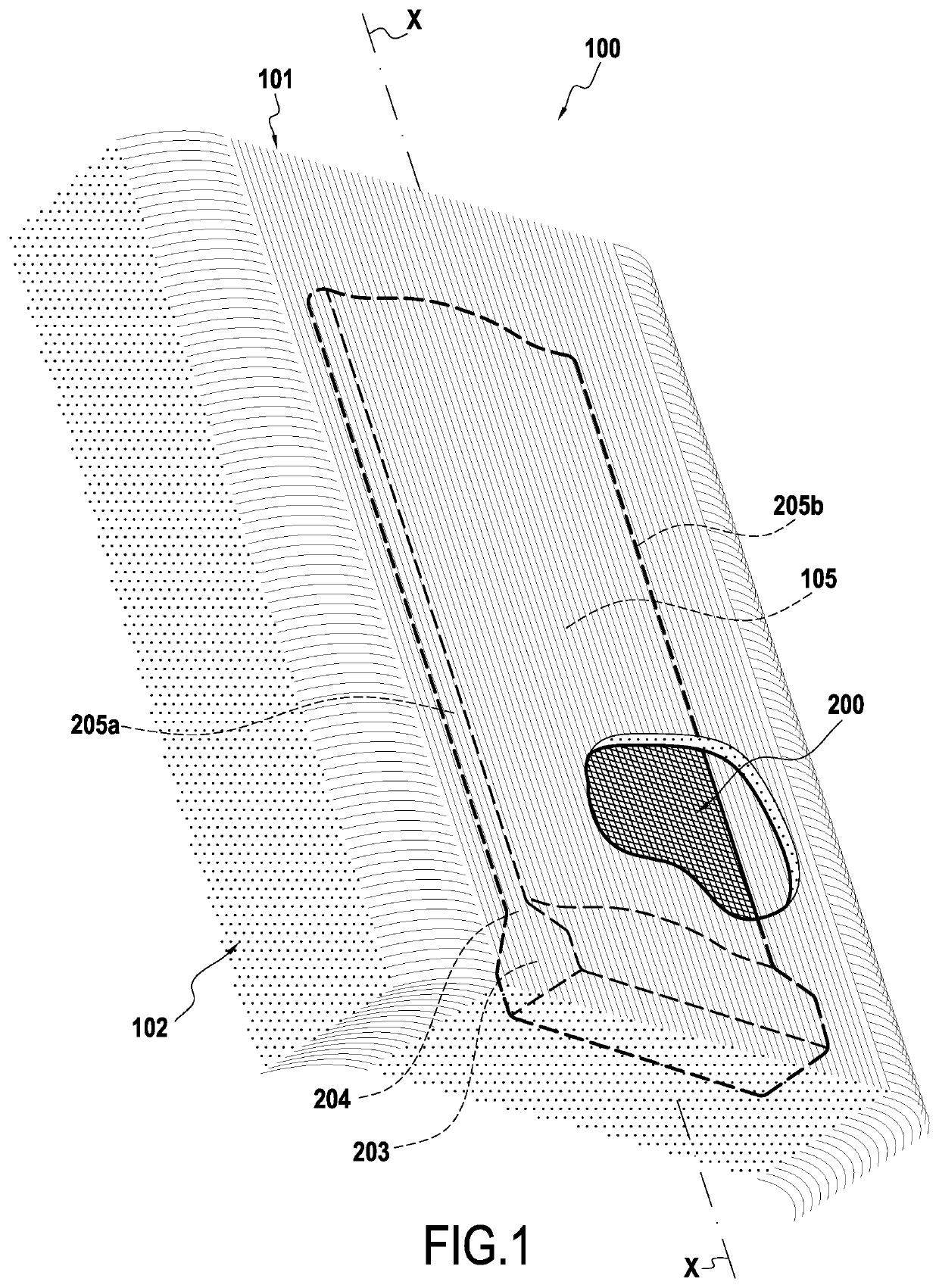Method for shaping a fibrous preform by compacting in order to produce a composite material part
a technology of composite materials and fibrous preforms, which is applied in the field of tubular parts of tubular parts, can solve the problems of difficult evacuation of injection tools, altering the mechanical properties of composite materials, and difficult operation of fibrous texture shaping by compaction, etc., to achieve soften the fibrous structure, facilitate the shaping, and facilitate the effect of fibrous structur
- Summary
- Abstract
- Description
- Claims
- Application Information
AI Technical Summary
Benefits of technology
Problems solved by technology
Method used
Image
Examples
Embodiment Construction
[0038]The invention generally applies to the production of composite material parts, the parts being produced from a fibrous preform into which a liquid precursor composition of a matrix material is injected and then transformed so as to obtain a part comprising a fibrous reinforcement densified by a matrix.
[0039]Hereinbelow, the present invention is described in application to the manufacture of a gas turbine composite material blade, such as an aeroengine blade.
[0040]The process for manufacturing a composite material blade according to the invention begins with the production of a fiber blank obtained by three-dimensional weaving or by multilayer weaving.
[0041]As used herein, “three-dimensional weaving” or “3D weaving” means a weaving method in which at least some of the warp yarns bind weft yarns over several weft layers, for example an “interlock weave”. As used herein, “interlock weave” means a 3D weave in which each warp layer interlinks several weft layers with all the yarns ...
PUM
| Property | Measurement | Unit |
|---|---|---|
| softening temperature | aaaaa | aaaaa |
| thickness | aaaaa | aaaaa |
| temperature | aaaaa | aaaaa |
Abstract
Description
Claims
Application Information
 Login to View More
Login to View More - R&D
- Intellectual Property
- Life Sciences
- Materials
- Tech Scout
- Unparalleled Data Quality
- Higher Quality Content
- 60% Fewer Hallucinations
Browse by: Latest US Patents, China's latest patents, Technical Efficacy Thesaurus, Application Domain, Technology Topic, Popular Technical Reports.
© 2025 PatSnap. All rights reserved.Legal|Privacy policy|Modern Slavery Act Transparency Statement|Sitemap|About US| Contact US: help@patsnap.com



